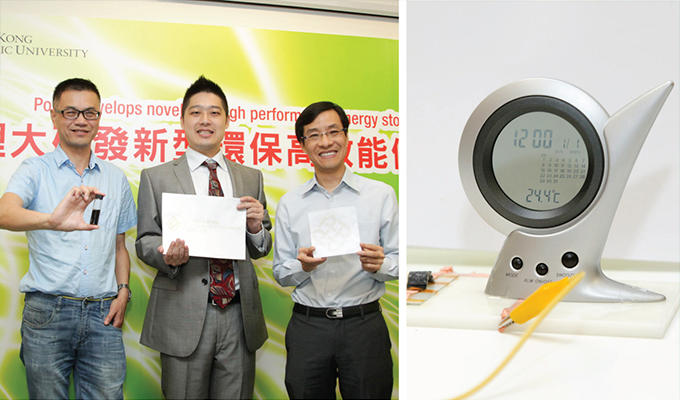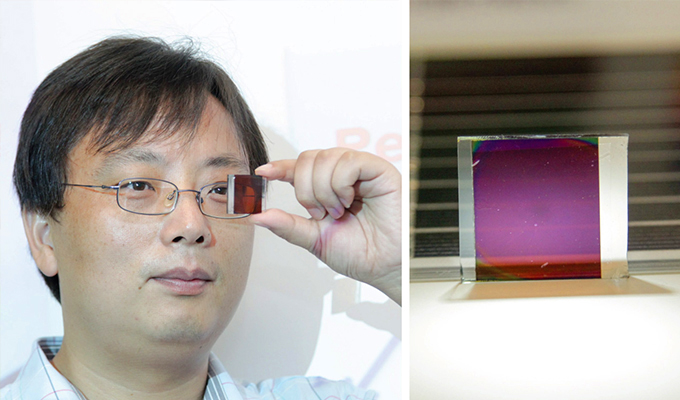

Conventional preparation method of manganese dioxide (MnO2) electrode has disadvantages including high cost, complicated processes and reduced electrical conductivity affected by coating process. In view of this, a research team led by Prof. Daniel Lau and Dr Yuan Jikang at the Department of Applied Physics invented a simple approach to synthesize eco-friendly MnO2 ink using glucose. Such ink can be used to produce low-cost yet high-performance energy storage devices via ordinary printing or even home-used printers.
With small size, light, thin, flexible and high energy capacity properties, this MnO2 ink supercapacitor can widely be used in wearable devices and radio-frequency identification systems, as the power sources of flexible and bendable display panels, smart textiles, smart checkout tags, sensors and luggage tracking tags.
The research paper has been published in Angewandte Chemie International Edition, a leading journal in Chemistry. Details>>
On the other hand, with the increasing demand of building integrated photovoltaics systems, Dr Yan Feng’s research team of the same department has developed the first-ever made, efficient and low-cost semitransparent perovskite solar cells with graphene electrodes.
This kind of solar cells has around 12% power conversion efficiencies which is higher than that of conventional semitransparent solar cells. Their semitransparent feature allows the cells to absorb light from both sides, significantly increasing the surface area for collecting solar energy. They can be widely used in windows, facades, louvers and rooftops of buildings for converting solar energy into electricity. Details>>